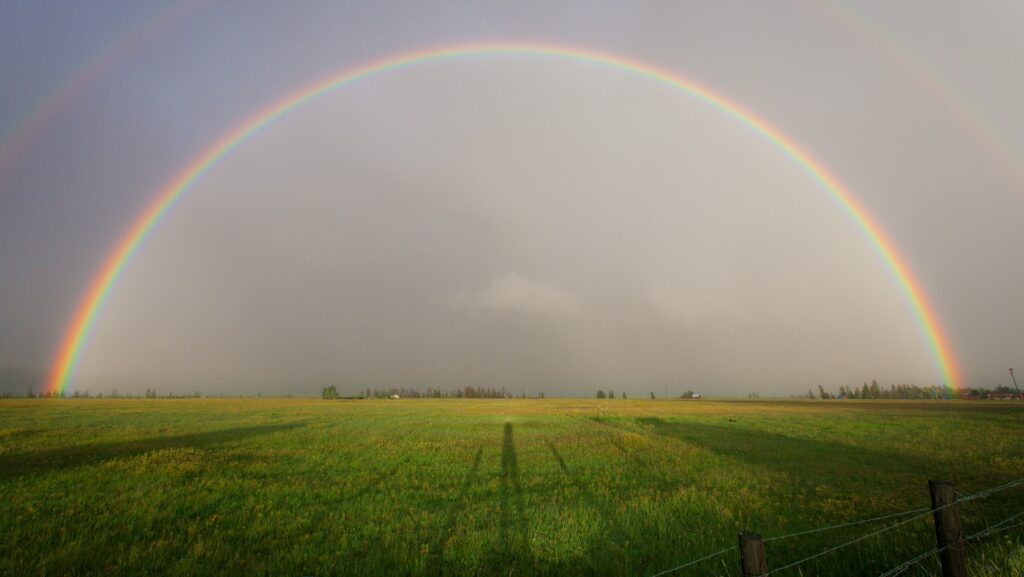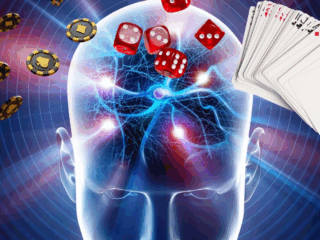
Is It Lucky to See the End of a Rainbow
Have you ever caught a glimpse of a rainbow and wondered if it brings good luck? Many cultures across the world have associated rainbows with various mystical beliefs and folklore. While some consider them to be a sign of fortune, others view them as simply beautiful natural phenomena. So, is it lucky to see the end of a rainbow? Let’s explore this intriguing question.
The end of a rainbow is often depicted as the spot where a pot of gold awaits lucky individuals. This popular imagery has its roots in Irish mythology, where leprechauns are said to hide their treasure at the point where the rainbow touches the ground. However, from a scientific standpoint, rainbows are optical illusions caused by reflection, refraction, and dispersion of light in water droplets. Therefore, actually reaching or seeing the end of a rainbow is impossible since it constantly moves as you change your perspective.
While there may not be any tangible luck awaiting us at the end of a rainbow, witnessing this stunning phenomenon can still fill us with awe and wonder. Rainbows have captivated human imagination for centuries and continue to inspire artists, writers, and dreamers alike. Whether you believe in their symbolic meaning or simply appreciate their beauty, catching sight of a vibrant arc stretching across the sky is undoubtedly an enchanting experience.
So next time you find yourself gazing at the spectacle of colors overhead after rainfall, remember that while there might not be any pots filled with gold waiting for you at its elusive endpoint, simply witnessing such natural wonders can bring joy and remind us how magical our world truly is.

The Origins of the Rainbow Myth
Let’s delve into the intriguing origins of the rainbow myth and explore its cultural significance throughout history. From ancient civilizations to modern folklore, the rainbow has captivated human imagination for centuries.
- Ancient Beliefs and Myths In many ancient cultures, rainbows were seen as mystical symbols with various interpretations. For example:
- In Greek mythology, it was believed that rainbows were a pathway between Earth and Mount Olympus, connecting mortals with the gods.
- Native American tribes often regarded rainbows as bridges that allowed spirits to travel from one realm to another.
- Chinese mythology associates rainbows with good luck and fortune, considering them as celestial dragons bringing harmony and prosperity.
These diverse beliefs highlight the universal fascination humans have had with this enchanting natural phenomenon.
- Scientific Explanations While myths surrounding rainbows are plentiful, science provides us with concrete explanations for their formation. Rainbows occur when sunlight is refracted, or bent, through water droplets in the air, resulting in a spectrum of colors appearing in the sky.
Sir Isaac Newton’s experiments with prisms in the 17th century shed light on how white light can be split into its component colors through refraction. This scientific understanding helped demystify rainbows while adding to our appreciation of their beauty.
- Symbolism and Cultural Significance Beyond their aesthetic appeal, rainbows hold symbolic meaning in various cultures worldwide:
- In LGBTQ+ communities, the rainbow flag represents diversity and inclusivity.
- The rainbow is often associated with hope and new beginnings after storms or difficult times.
- Some religions see rainbows as signs of divine presence or promises from deities.
Overall, whether through religious symbolism or representations of diversity and resilience, the rainbow continues to evoke powerful emotions across different societies.
As we ponder upon these origins and meanings behind the rainbow myth, it becomes clear that this vibrant arc in the sky holds a special place in our collective consciousness. Its allure continues to inspire and captivate us, reminding us of the beauty and wonders of the natural world.












